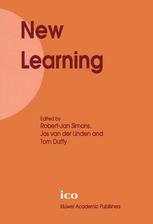

Most ebook files are in PDF format, so you can easily read them using various software such as Foxit Reader or directly on the Google Chrome browser.
Some ebook files are released by publishers in other formats such as .awz, .mobi, .epub, .fb2, etc. You may need to install specific software to read these formats on mobile/PC, such as Calibre.
Please read the tutorial at this link: https://ebookbell.com/faq
We offer FREE conversion to the popular formats you request; however, this may take some time. Therefore, right after payment, please email us, and we will try to provide the service as quickly as possible.
For some exceptional file formats or broken links (if any), please refrain from opening any disputes. Instead, email us first, and we will try to assist within a maximum of 6 hours.
EbookBell Team

5.0
68 reviewsThe book you are now reading aims to bring together research and theory on "new learning, "which is te term used to refer to the new learning outcomes, new kinds of learning processes, and new instructional methods both wanted by society and currently stressed in psychological and educational theory. Many people keep asking about “new learning.” Is it really a new way of learning? Are there really new learning outcomes? Is this current fad really different from the other kinds of learning propagated by such traditional school innovators as Montessori, Dewey, Steiner, or Freinet? Of course, there are some similarities between the attention now being paid to new ways of learning and new learning outcomes and previous efforts. We believe, however, that at least three important differences exist. First, there is much more attention to the role of active, independent, and self-directed learning than before. Many more schools and teachers are involved in such efforts than in the twenties or the sixties, for example. Many governments are stimulating active ways to learn. Employers and employee organizations are — for various reasons — now in favor of active learning in school and on the job. This is clearly related to increased recognition of the importance of and need for life-long learning and what are now called “learning organizations” as a result of rapidly changing societies and economies.